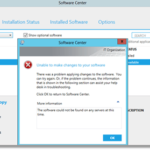SQL Server Installation Preparation: Creating Windows Firewall Rules, Logical Disks, Installing .NET Framework 3.5, and Creating Service Accounts.
Create Windows Firewall rules for SQL
1. Log in to your SQL server. Pulsante mouse destro click on the Inizio pulsante e selezionare Pannello di controllo;
2. Aprire Windows Firewall;
3. Fare clic su Advanced settings;
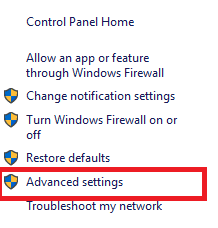
4. Fare clic su Regole in entrata e seleziona Nuova regola;
5. Select the option Porta e fai clic su Prossimo pulsante;
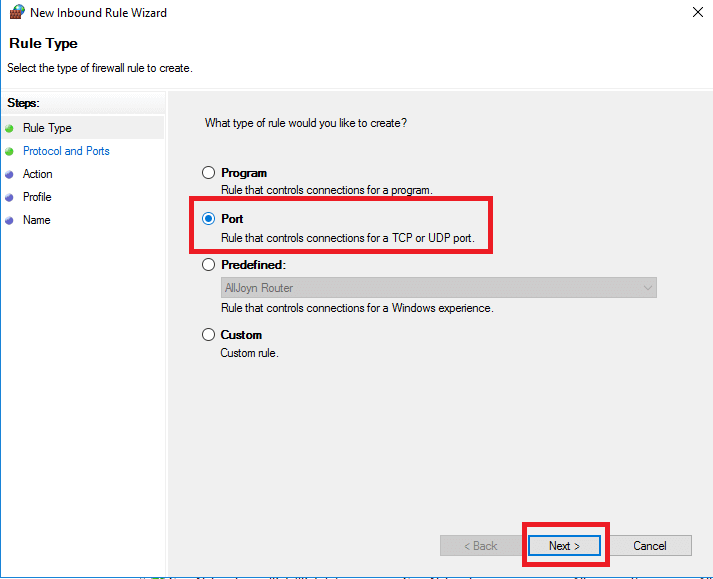
6. Select options UDP, Specific local ports ed entra 1434 e fai clic su Prossimo pulsante. (Default SQL UDP port, allow remote connections to SQL);

7. Leave Consenti la connessione e fai clic su Prossimo pulsante;

8. Leave check marks by default and click Prossimo;

9. Enter the rule name, for an example SQL UDP, e fai clic su Fine pulsante;
10. Repeat and select the TCP option, Specific local ports, ed entra 1433. (Default SQL TCP port). Anche, I enter 14331 E 8080 after the symbol “,” for my future SCCM installation. Clic the Prossimo pulsante;
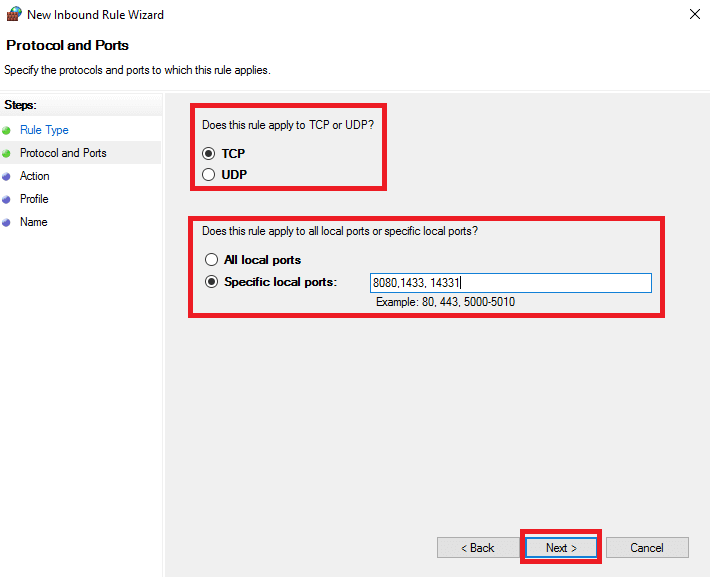
11. Repeat, enter the rule name, for example, SQL TCP, e fai clic su Fine pulsante;
12. Check created tules;
Create logical disks
Create logical disks. Early I created and connected to my SQL VM two “Virtual Disks". In questo post, we initialize them and create “Logical disks” in the system.
1. Pulsante mouse destro on the “Inizio” button and select “Disk Management";

2. First of all change the “CD-ROM” drive letter from “D” to “R". Pulsante mouse destro click on CD-ROM and select Change Drive Letter and Paths;

3. Fare clic sul Modifica pulsante;
4. Select the drive letter “R” and click the OK pulsante;

5. In the pop-up window click the SÌ pulsante;
6. Fare clic sul OK button to apply changes;
7. Pulsante mouse destro click on the first Disk and select Online;

8. Pulsante mouse destro click on the first Disk and select initialize Disk;

9. Select option “GPT (GUID Partition Table)"E fai clic"OKpulsante ";
10. Pulsante mouse destro click on first Disk “Unallocated space” and select “New Simple Volume” (to create new logical disk);

11. Fare clic sul "Prossimopulsante ";
12. Leave size as default and click the “Prossimopulsante ";
13. Assign a drive letter, as an example “D” and click the “Prossimopulsante ";
14. Set format options:
- File System – leave “Ntfs", if you use “ReFS” – you can’t backup it with “Dpm” (Data Protection Manager doesn’t understand ReFS);
- Allocation unit size – I set “64K” because I place on disk a few big files;
- Volume label – set the name for your drive. In my case “SCCM-DATA".
Fare clic sul "Prossimopulsante ";

15. Check the summary information and click the “Finepulsante ";
16. Repeat for the second disk;
17. Open “This PC” and check newly added “Logical Disks”;
Install Net Framework 3.5
You can install it using Cmd or GUI. In questo post, we install “NET Framework 3.5” from GUI.
1. If Server Manager doesn’t start at login – run it. Click on the upper menu “Manage” and select “Add Roles and Features”;
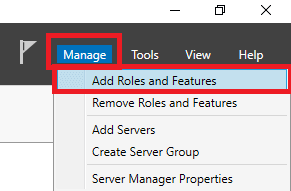
2. Fare clic sul "Prossimopulsante ";
3. Fare clic sul "Prossimopulsante ";
4. Select your target server and click the “Prossimopulsante ";
5. Don’t install any roles, Fare clic sul "Prossimopulsante ";
6. Set the check mark on “.NET Framework 3.5 Features” and click the “Prossimopulsante ";

7. Fare clic sul "Installarepulsante " (if you don’t have an internet connection, but insert DVD or *.iso file with operating system installation files – click “Specify an alternate source path” <lettera di guida>:\fonti sxs);
8. When the installation is complete click the “Vicinopulsante ";
Create Service Accounts
1. For my SQL & SCCM deployment I create folders:
- On disk “D” ("SCCM-DATA") – SCCM and sub-folders (Backup, Data, Tronchi);
- On disk “E” ("TEMP") – SCCM;
You plan and deploy SQL as you wish or by your “Corporate Policies".
2. Let’s add “Service accounts” for SQL and SCCM deployment. Pulsante mouse destro click on the “Inizio” button and select “Computer Management”;

3. Vai a “Groups” and open “Administrators";

4. Fare clic sul "Aggiungerepulsante ";
5. First add the SCCM server ("AD Object Computer") account. Prossimo, add all SQL service accounts and SCCM service accounts (for client installation); After adding click the "OKpulsante ";
6. Also you may enable in “Windows Firewall” rule to allow ping;

7. And enable more rules (vedi schermata) for successful SCCM deployment.

8. If you don’t do step “7” you may get the next error when installing SCCM;


